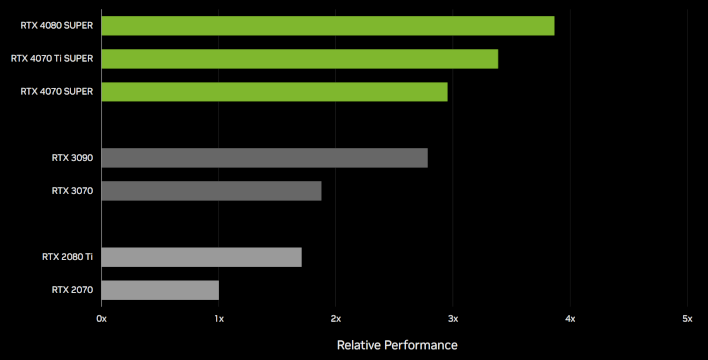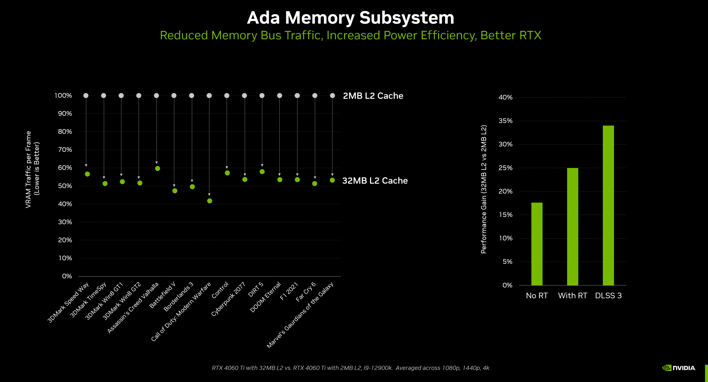NVIDIA’s GeForce RTX 4070 Super Has A Wonderfully Fat 48MB Of Frame Cache

We included this chart in the post, which is admittedly a little hard to read. Open it in a new tab and zoom in if you have any trouble. This chart was based mostly on numbers provided to us by NVIDIA, with a little extrapolation for the raster hardware specifications. Only, it turns out, there's one small but very significant error in this chart, and it's not our fault. Here, have an amended version:

Did you spot the change? If you read the headline, you probably did. Indeed, it turns out that NVIDIA itself made an error in its CES documents, and that the GeForce RTX 4070 SUPER actually comes with the full 48MB of L2 cache present on the AD104 die. This makes it a pretty close cousin to the original GeForce RTX 4070 Ti. While it still has fewer compute and raster resources, the memory interface is identical, and now, so is the cache.
If you're wondering why 12 megabytes of L2 cache is such a big difference, well, it's because the Ada architecture relies heavily on caching to reduce the need for big memory bandwidth. This isn't quite as critical on AD104-based cards like the GeForce RTX 4070 and its SUPER variant because they have a relatively-wide 192-bit memory interface that gives over 500 GB/sec of memory bandwidth when paired with fast 21-Gbps memory. On the lower-end Ada GPUs, their narrow 128-bit memory interface means heavy reliance on their large 32MB of cache.

Still, the extra L2 cache means that effective memory performance on the GeForce RTX 4070 SUPER will be a considerable upgrade over the original recipe GeForce RTX 4070. In combination with the extra compute and raster hardware, the difference between these GPUs could be well more than worth the extra $50 (at MSRP). We might just have some numbers to confirm that for you before long, so stay tuned.


